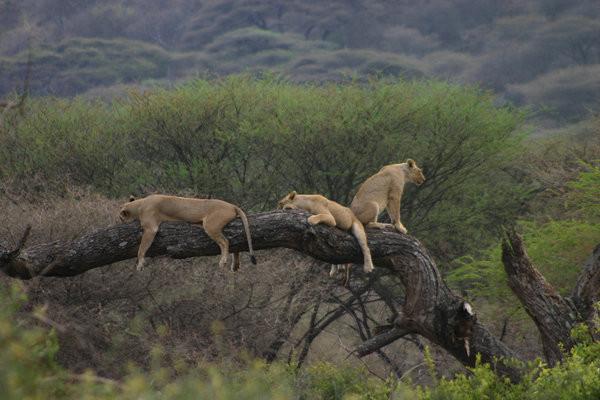
Lake Manyara National Park
“A Home of Tree Climbing Lions”
The lush green vegetation consisting of tall trees of the ground water forest, the tree climbing lions, the soda lake inhabited with thousands of pink-hued flamingos, large water birds and the troops of baboons and blue monkeys and the rift valley escarpment make your safari to this area unforgettable.
The park derives its name from a plant called Euphorbia tirucalli, known as Emanyara in Maasai language and covers an area of 648.7 km2.
History
Lake Manyara National Park is a protected area in Tanzania’s Arusha and Manyara Regions, situated between Lake Manyara and the Great Rift Valley. It is administered by the Tanzania National Parks Authority, and covers an area of 325 km2 (125 sq mi) including about 230 km2 (89 sq mi) lake surface. More than 350 bird species have been observed on the lake.
Climate
The Park experiences bi-modal rainfall season with short rains starting from November to December and long rains from February to May and dry season is from late June to October.
It is located at an altitude between 850 and 2000 meters with annual average rainfall ranging from 650 to 760mm.
Getting there
You can access the park by road or air
Road. The park is 115 km from Arusha city to main gate via Makuyuni-Ngorongoro road.
Air. You can also access the park through scheduled flights to Manyara Airstrips
Park Attractions
The Park has remarkable attractions most notably the tree climbing lions, Marang’ forest, hot spring, ground water forest, diversity of bird species and the rift valley. Plan your trip by visiting Lake Manyara National Park were you will get exceptional experience that quenches your travel thirst.
Wild Animals
Animals found here includes elephant, buffalo, hippo, lion, leopard, occasional cheetah and giraffe. Lions here have opted to rest up during the heat of midday in trees, giving Manyara lions somehow different behavior.
Birds
The park offers a high diversity of bird species over 390 birds species both migrants and residents including 50 birds of prey, raucous forest hornbills, pink-hued flamingos and flotillas of pelicans.
Hot springs
Its water is heat by volcanic activity to a temperature of 76.5 0C. The water is an important source of food for lesser flamingos. Also the mineral content of the water has curative values.
Tourism Activities
Lake Manyara National Park offers a range of exciting activities including day game drives, walking safaris, night game drive, and canoeing. There is also canopy tour, bird watching and hot bush meals that gives someone a reason to smile!
Filming and Photographing
Lake Manyara National Park is an ideal place for filming and photographing. Visitors are also welcomed to perform this activity that will create a life time memory






